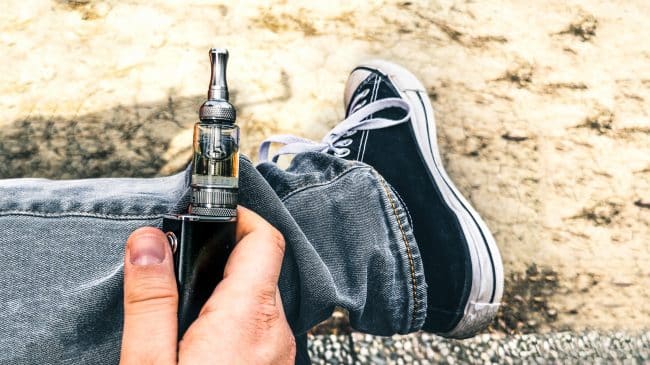During the 2016 presidential campaign, then-candidate Donald Trump raised eyebrows with his surprisingly relaxed attitude toward marijuana legalization. As president, he’s won plaudits for embracing criminal justice reform. So the Trump administration’s push for a ban on all non-tobacco e-cigarettes appears out of character for an administration committed to deregulation and cost-benefit analysis.
The announcement sparked a furious backlash that caught the administration off-guard. It shouldn’t have surprised them.
There are almost 14 million vapers in the United States, seven million of whom use e-cigarettes exclusively. The potential public health gains of e-cigarettes are enormous. According to researchers at Georgetown University, the replacement of cigarettes by e-cigarettes over the next decade could save 6.6 million lives.
Unfortunately, most people are now under the misapprehension that vaping is just as or more dangerous than smoking. Every credible scientific investigation shows the reverse to be true. Not only is vaping safer than smoking, as FDA officials acknowledge, but it’s the most effective method of switching away from cigarettes ever invented.
But all these gains are set to be traded in to stem the rise in youth vaping, as revealed by the latest data from the National Youth Tobacco Survey.
While the National Youth Tobacco Survey data shows youth vaping on the rise, it also shows the biggest single-year drop in teen smoking ever recorded at 28 percent. Eight years’ worth of data has blown apart the notion that vaping is a “gateway” to smoking.
Nevertheless, critics claim (unconvincingly) that the teen vaping problem is due almost exclusively to the availability of “kid-appealing” flavors.
Before 2018, youth vaping was either flat or falling, yet thousands of e-cigarette flavors were on the market for years. In the United Kingdom, where public health bodies promote e-cigarettes, teen vaping is a fraction of that seen in the U.S. and mostly confined to smokers. But the U.K. market is awash with as many, if not more, vape flavors than the U.S.
As for adult vapers, contrary to popular belief, non-tobacco flavors are by far the most popular choice, with tobacco flavors being some of the least popular. One can’t separate flavors as a niche and nefarious part of the e-cigarette industry — flavors are the e-cigarette industry, and their prohibition would give an inherent advantage to traditional cigarettes.
According to a study examining different types of tobacco flavors bans, researchers at the Yale School of Public Health concluded banning e-cigarette flavors without banning menthol cigarettes would lead to the greatest increase in cigarette selection. Financial analysts seem to agree. Wells Fargo, Piper Jaffray, and Cowen and Company all concur that bans on flavored e-cigarettes are a boon to the traditional cigarette market.
Even the head of the FDA’s Center for Tobacco Products agrees. Writing recently in court documents, Mitch Zeller said:
“Dramatically and precipitously reducing availability of these products could present a serious risk that adults, especially former smokers, who currently use [e-cigarette] products and are addicted to nicotine would migrate to combustible tobacco products, even if particular [e-cigarette] products ultimately receive marketing authorization and return the market later.”
Prohibition may remove the legal supply of these products, but it can’t and won’t destroy the demand for them. Instead, it will generate a black-market incentive to supply the highly motivated consumers who don’t switch back to cigarettes with the products they believe saved their lives.
Prohibition also removes all opportunities to reduce youth vaping in ways that may not please everyone but may provide a solution that at least all sides can live with. Raising the tobacco age is a bad policy, but it’s better than prohibition. Restricting flavor sales to 21-only stores is lousy policy, but it’s better than prohibition. The same is true for limits to the amount of flavored products that can be bought online.
Aside from disregarding the overwhelming evidence in favor of vaping on public health grounds, the administration appears not to have considered a troubling question. What will happen to those who continue to produce and sell flavored vapes after prohibition? Michigan’s ban, announced before Trump’s, says anyone caught with four or more flavored vapor products could face six months in prison.
How long is the Trump administration prepared to send someone to prison for selling a safer alternative to cigarettes?
This column originally appeared in the Washington Examiner.

